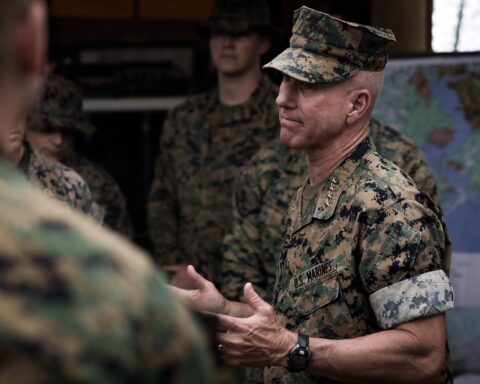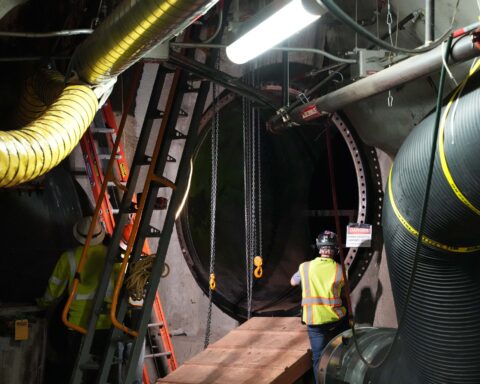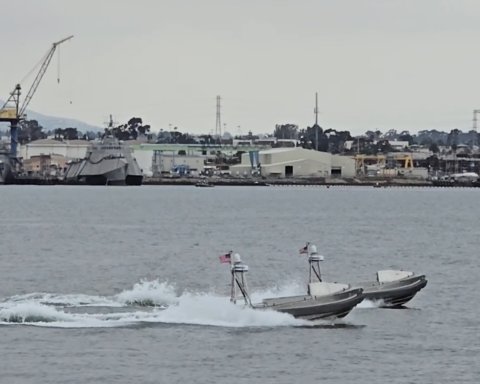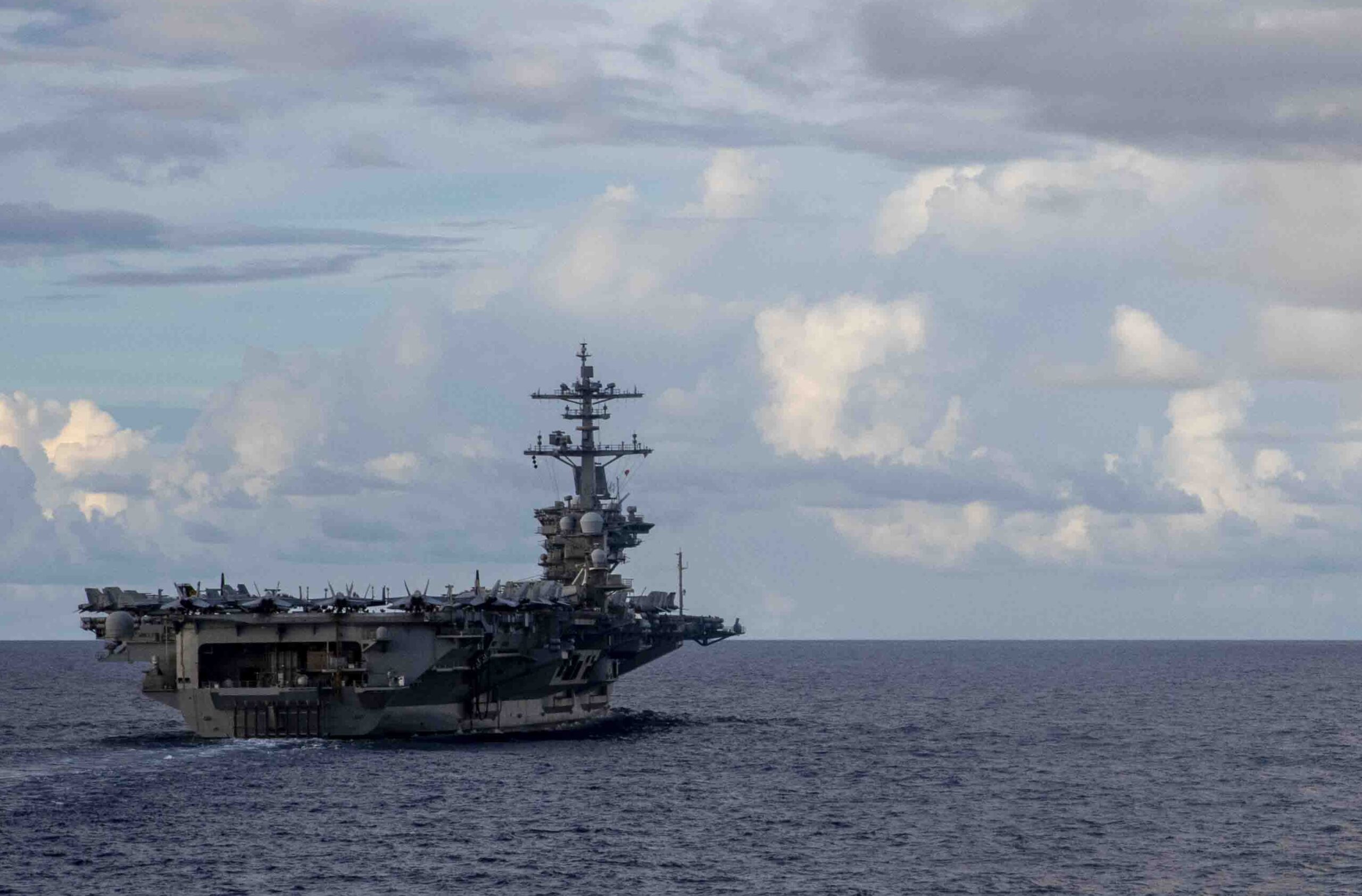
The Theodore Roosevelt Carrier Strike Group on Saturday wrapped up its participation in Freedom Edge – the inaugural, trilateral, multidomain exercise between the U.S., Japan and South Korea, while, on the same day, Marine Expeditionary Force in Japan received its first Amphibious Combat Vehicles . In other developments, Japan’s Joint Staff Office issued on Monday a release on the movement of several Russian ships around Japan.
The strike group, comprising carrier USS Theodore Roosevelt (CVN-71) with embarked Carrier Air Wing (CVW) 11 and destroyers USS Halsey (DDG-97) and USS Daniel Inouye (DDG-118), along with a P-8 Poseidon maritime patrol aircraft drilled from Thursday in the East China Sea with Japan Maritime Self Defense Force destroyer helicopter carrier JS Ise (DDH-182), destroyer JS Atago (DDG-177) and a JMSDF P-1 MPA, and South Korean forces comprising Republic of Korea Navy destroyers ROKS Seoae-Ryu-Seong-ryong (DDG-993) and ROKS Gang Gam-Chan (DDG-979), a ROKN Lynx helicopter, a ROKN P-3C Orion MPA and F-16 Falcon fighters from the Republic of Korea Air Force.
With completion of the drills, the Theodore Roosevelt CSG is now making its way to U.S. 5th Fleet as part of the ongoing Prosperity Guardian mission to protect merchant shipping in the Red Sea.
North Korea’s Foreign Ministry denounced the drills in a statement carried on Sunday by state media Korean Central News Agency (KCNA). “We strongly denounce the U.S., Japan and ROK for their repeated reckless and provocative military muscle-flexing against the DPRK and other independent states in the region and once again seriously warn of the fatal consequences to be entailed by them,” read the statement, which also stated that North Korea will defend its’ sovereignty, security and interests along with peace in the region through offensive and overwhelming countermeasures.
North Korea fired two short-range ballistic missiles on Monday to the northeast according to South Korea’s Joint Chiefs of Staff, with one missile launched at 5.05 a.m. traveling 600 km and landing in the sea while another launched at 5.15 a.m. only traveled 120 km. North Korea has not stated as of press time as to whether the launches were in response to the Freedom Edge exercise or part of its ongoing ballistic-missile capability development.
In Japan on Saturday, the III MEF received its first shipment of ACVs, with the vehicles unloaded at Naha Military Port, according to a Marine Corps release. “III Marine Expeditionary Force is a modern, ready force,” said U.S. Marine Corps Lt. Gen. Roger B. Turner, III MEF commanding general in the release. “Upgrading our fleet with amphibious combat vehicles capable of supporting sea denial and maritime operations will further bolster our ability to support deterrence efforts and respond to contingencies in the Indo-Pacific.”
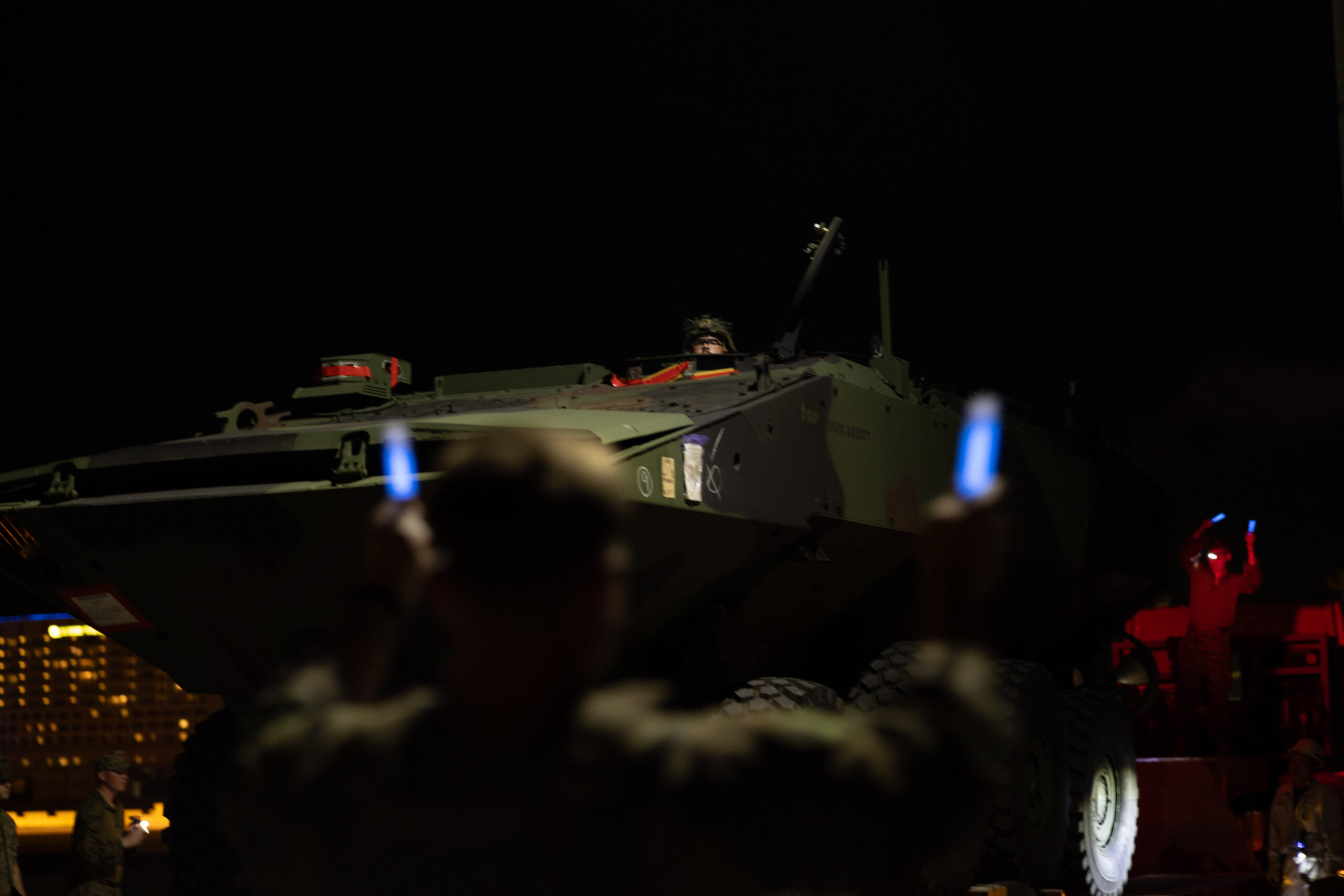
The ACVs will be transported to Camp Schwab over the next several days The arrival of the vehicles realizes a long-projected update to the current armed ship-to-shore connection and ground combat capabilities of the AAV. No details were given as to the number of vehicles that had arrived.
The ACV has already made its initial operational deployment to the Indo-Pacific region with the 15th Marine Expeditionary Unit and carried out its first operational disembark during the Balikatan exercise held in the Philippines in May, deploying from amphibious dock landing ship USS Harpers Ferry (LSD-49). Originally, the ACV was to make its operational debut with the 13th MEU as part of the Makin Island ARG deployment in late 2022 to early 2023, but the Marine Corps delayed the deployment because of a training incident.
On Monday, Japan’s JSO issued a release on the movements of Russian Navy ships in La Perouse Strait, which divides the Russian island of Sakhalin from the Japanese main island of Hokkaido, and connects the Sea of Japan on the west with the Sea of Okhotsk on the east. On Friday, Russian surveillance ship Pribaltica (80) was sighted at 11 a.m. sailing northwest in an area 56 miles east of Cape Soya, Hokkaido, and subsequently sailed west through La Perouse Strait to enter the Sea of Japan. The release noted that Pribaltica transited east through the strait from June 13-14.
Subsequently, at 6 p.m., corvette RFS Rezkiy (343) was sighted sailing west in an area 18 miles north of Cape Soya, and then sailing through La Perouse Strait to enter the Sea of Japan. The release noted the corvette had earlier cruised around the strait from June 15-18 and then sailed east.
The release went on to say at that on Saturday at 7 a.m., destroyer RFS Admiral Panteleyev (548) and corvettes RFS Gromkiy (335) and RFS Hero of the Russian Federation Aldar Tsydenzhapov (339) were sighted sailing west in an area 18 miles north of Cape Soya, after which the three Russian ships sailed west through La Perouse Strait to enter the Sea of Japan. The release noted that Gromkiy cruised around the strait from June 15-18 before heading east while Admiral Panteleyev sailed east through the Tsugaru Strait, which divides the main islands of Honshu and Hokkaido, on June 18.
On all occasions, JMSDF fast-attack craft Kumataka (PG-827) and P-3C Orion MPAs of Fleet Air Wing Fleet Air Wing 2 based at JMSDF Hachinohe Air Base on Honshu shadowed the Russian ships, according to the release.
The Russian Navy Pacific Fleet on Friday wrapped up drills that started on June 18 and the Russian ships likely were headed to their home port at Fokino, Primorsky Krai district, on the Russian continent. Japanese straits are largely international waterways that allow unrestricted transit by non-Japanese ships, although JMSDF ships and aircraft routinely shadow Russian and Chinese ships sailing through them.



